I don’t know about you, but I am feeling a little behind in my canning planning. If you are too, worry not! If we follow these ten simple steps, we’ll both step into preservation season calm and prepared to tackle those bushels of tomatoes and pickles and corn.
I was just chatting with my friend and mentor Margaret Roach of A Way To Garden about all this. (Listen in at her most recent podcast.) Margaret’s a vegetarian and a one-person household, so in some ways she and I put up the harvest very differently, but in other ways there are huge similarities.
We’re joining forces today with dual-giveaways (more about that later in the post) and our best suggestions for how any food preserver can face the canning season with organization and confidence.
Let’s do this.
Get Your Plan Together
1. Consider Your Goals
Some people can purely as an exercise in frugality. Some like the craft of it. Some people like the convenience of shelf-stable foods, others want to avoid BPA in cans. Some people are trying to support their local foodshed, or make sure nothing from the garden goes to waste. Some people are getting ready for zombies, other just want to control what goes into their food.
Most of us have some combination of goals that motivate our home food preservation. Consider yours. Why do you this and what do you want to get out of it?
I can, primarily, for quality, convenience and the joy of it. I like having really convenient pantry staples at the ready without having to turn to commercial convenience food. This means that I focus on versatile basics, like tomatoes and garbanzo beans.
Read more: Zombies vs. The Joy of Canning.
2. Take An Inventory
Before you start canning up dozens of jars of peach mulberry curry sauce or whatever, go spend a few minutes staring into your cupboards, pantry, garage – wherever your food storage happens. You might want to print out a larder assessment sheet for this.
Make a note of what canned items your family really eats through the year – store-bought or home-canned. For us, the big winners are always canned tomatoes, beans, pickles, stock, simple jams with zings of flavor, and pork.
Now it’s time for some hard truths. What preserved goods are languishing in your pantry, several years old and forgotten? Give yourself permission to compost those creations that you know, deep down, you will never eat.
Read More: What Foods Should I Preserve?
3. Seek Out Inspiration
Now’s the fun part! Sit down with a cup of coffee or tea and a few of your favorite canning books and the notes from your inventory. As you flip through your books, just let your food preserver’s heart run wild.
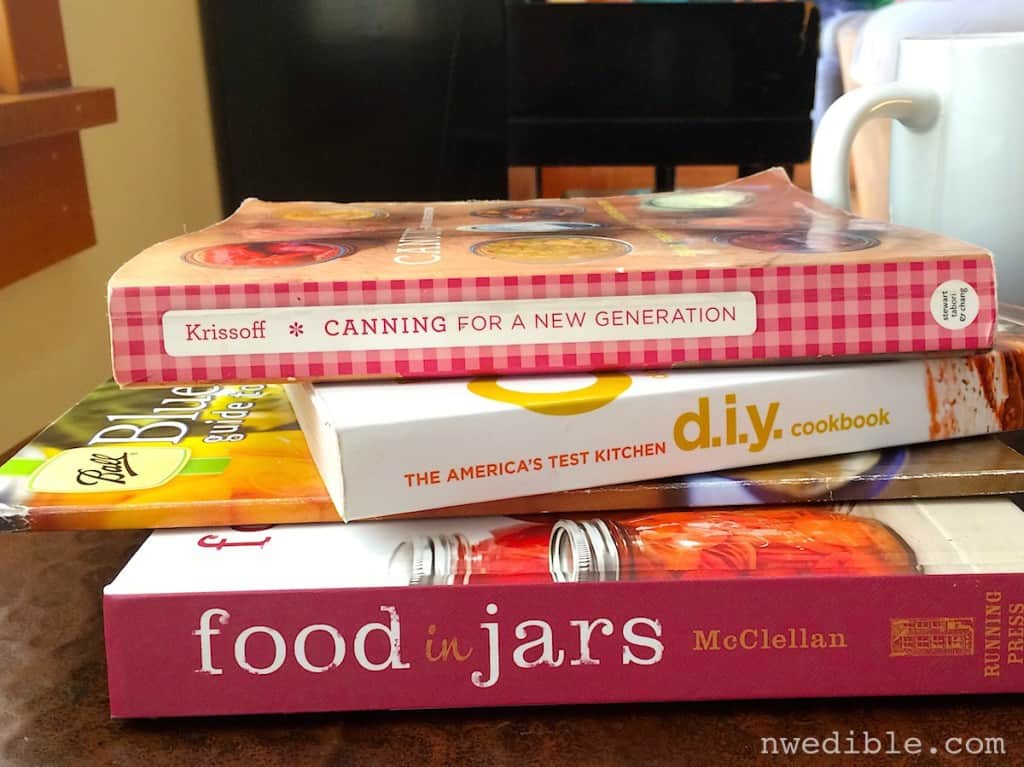
Consider your dream fantasy canning creations, holiday gifts, canning swaps and other situations in which you might give away or trade your jars. When something looks incredible, write it down or flag the page so you can easily find that recipe again.
My favorite canning resources:
- The National Center For Home Food Preservation
- [easyazon_link identifier=”B005SK6Y1Q” locale=”US” tag=”nortediblife-20″]The Ball Blue Book[/easyazon_link] (part of the giveaway below!)
- [easyazon_link identifier=”0762441437″ locale=”US” tag=”nortediblife-20″]Food in Jars[/easyazon_link]
- [easyazon_link identifier=”1584798645″ locale=”US” tag=”nortediblife-20″]Canning For A New Generation[/easyazon_link]
- And you can always [easyazon_link identifier=”1570619913″ locale=”US” tag=”nortediblife-20″]pre-order my book[/easyazon_link], which is not exclusively about canning, but which does contain many of my favorite food preservation recipes, including an awesome one for British style canned baked beans.
4. Fine-Tune Your List
Just like gardeners want to grow all the vegetables, canners typically want to can all the things. But look, we can’t. There aren’t enough hours in day or jars in the house. This is as much about editing your list as it is about scribbling things on it.
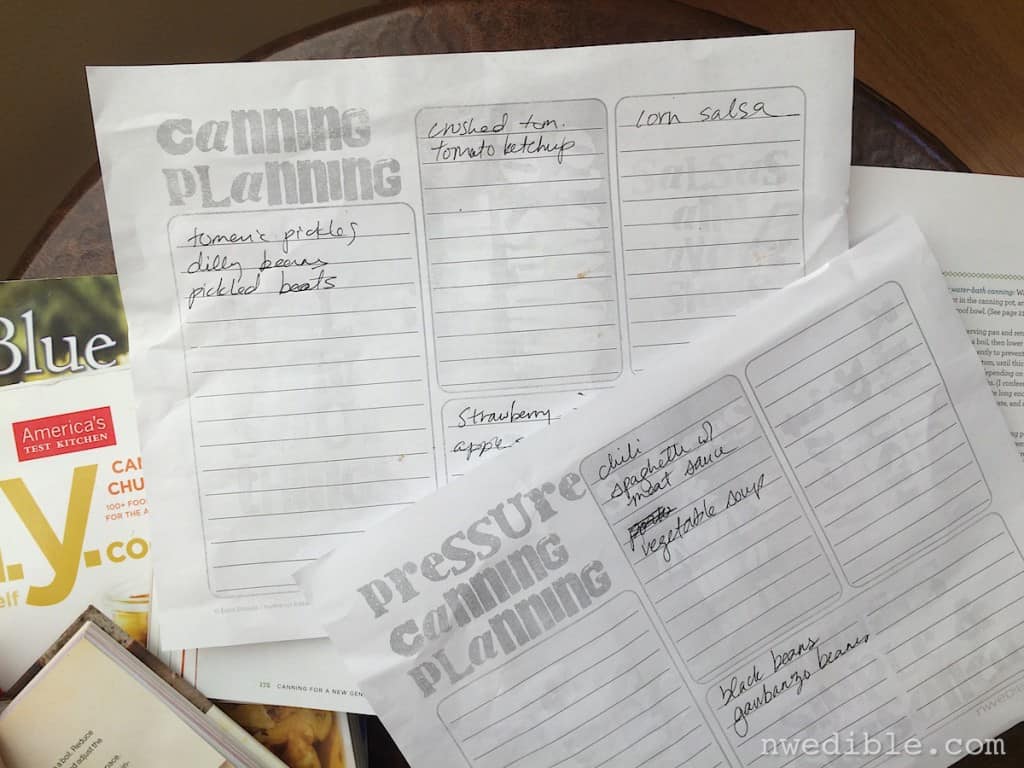
Remember your goals and inventory. Let those guide you as you make your final selections. If you like, go print out my Canning Planning and Pressure Canning Planning sheets – these will help you think about your food preservation by category so you’re less likely to decide you absolutely need 64 types of peach jam (52 is plenty).
Make sure you are selecting recipes from reputable sources that follow safe canning procedures.
5. Check Produce Ripeness Dates
Preserved food is never better than the ingredients it’s made from. We want everything to be at the peak of ripeness when we put it up. That’s when it tastes best and that’s when it’s cheapest if you’re buying.
Some produce – like cabbage – will be available locally for months and months. Some delicate fruit is only available for a few weeks. If you are harvesting your own garden you just have to be psychologically ready for the glut. If you are ordering from a farmer, pre-ordering is always smart.
If you want a specific variety of strawberry or peach from a local farmer, you may have to get even more detailed.
As an example, here’s the 2012 Eastern Washington ripening schedule of different peach varieties, from my friends at Valicoff Farms. You can see that if you are targeting, for example, the Elberta variety for your canning jar you’d better have a pretty good idea of when those peaches will be available or you’ll miss out.

Look back over your list and sanity check that you aren’t over-committed to canning projects based on produce ripening and other stuff in your life. While it’s true that late summer will always be the busiest times to put food up, there’s no reason you should attempt to squeeze applesauce into late August if you’re already planning pickles, tomatoes and peaches. As you can, stretch the process out.
Get Your Gear Together
Ok, now that you’ve got your mental game-plan together, it’s time to make sure your gear is up to snuff, too!
6. Get Your Dial Gauge Pressure Canner Tested
Get your dial gauge pressure canner tested. This is totally non-negotiable. You have to test the dial yearly. Why? Because botulism. Unfortunately, it’s become hard to find places to have the dials tested, so typically you have to ship the dial to the manufacture (Presto). This is a big pain, so if you do have a dial-only gauge pressure canner, look into converting yours to a weighted gauge canner.
If you don’t pressure can fresh vegetables (I don’t) and your canner is used more for meat and dry beans, you can probably put this off until early fall. But if you want canned corn, canned green beans or summer vegetable soup in your pantry, get on this dial-testing asap.
Additional Information: Presto Pressure Canner Service page.
If you have a weighted gauge canner, the weight itself acts to maintain the proper pressure and the dial is just a backup and indicator of when pressure has dropped to 0, so we know that it’s safe to open the canner. If you notice a difference in the pressure reading on the dial and the actual pressure as determined by the weight, you may need to get the dial tuned up but the actual pressure inside the canner should still be safe and accurate.
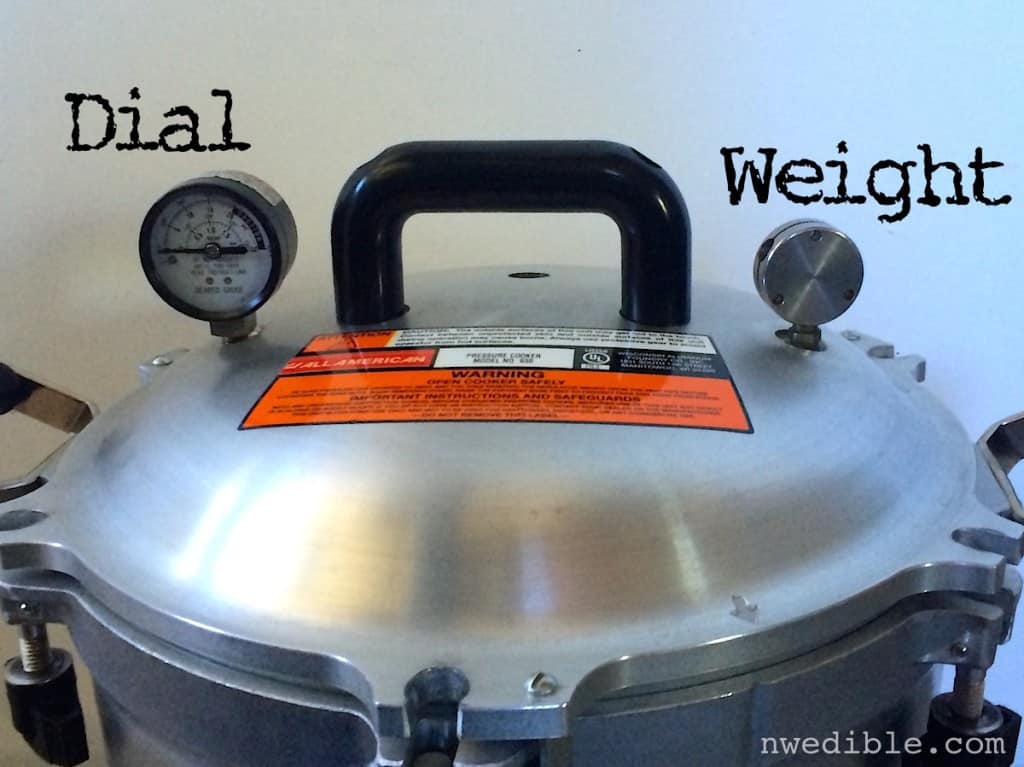
7. Assess your equipment
You do not need one of those lightweight speckled enamel canning pots. In fact, I personally really dislike those. Any pot tall enough to accommodate your jars with a couple inches of boiling water and a couple inches of head room above that is fine for boiling water bath canning. Make sure your canning pot has a rack that works, or make one yourself.
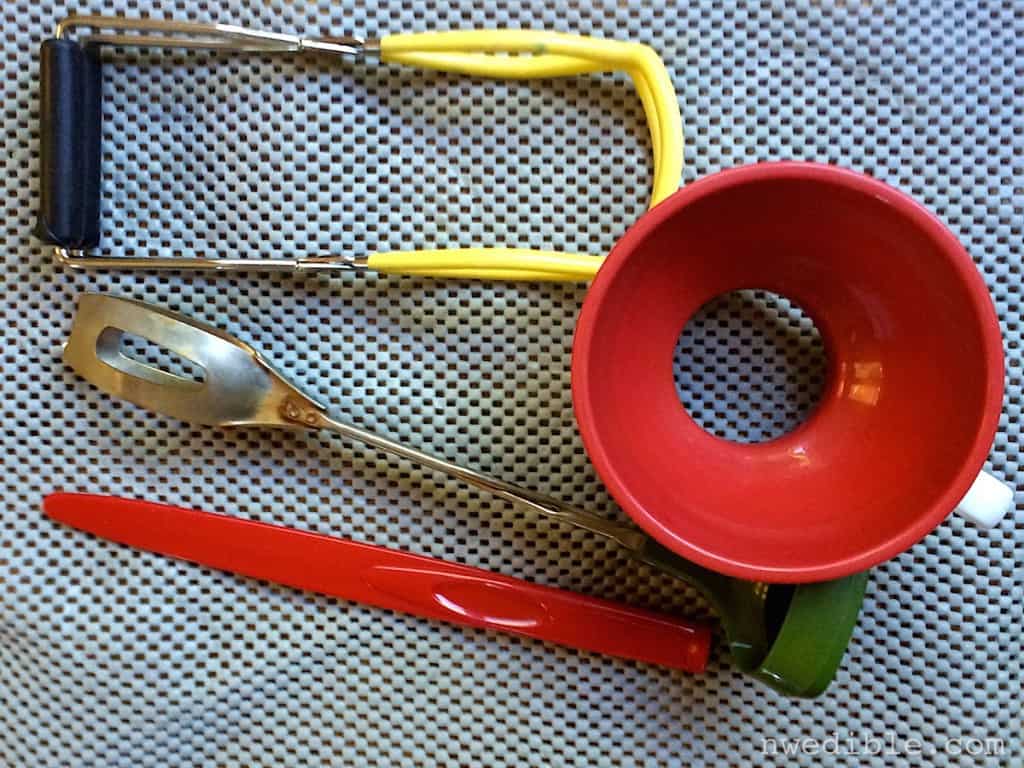
Track down your basic canning utensils and give them a dedicated home so you don’t hunt around when the canning passion is upon you. In addition to normal kitchen utensils like spoons, spatulas and ladles, you will need:
- [easyazon_link identifier=”B007QT4GMQ” locale=”US” tag=”nortediblife-20″]a canning funnel[/easyazon_link] – my favorite one is part of the giveaway.
- [easyazon_link identifier=”B000HJBFGC” locale=”US” tag=”nortediblife-20″]a jar lifter[/easyazon_link], essential for getting hot jars out of hot water safely, also part of the giveaway.
- [easyazon_link identifier=”B003UVK0S8″ locale=”US” tag=”nortediblife-20″]a magnetic lid lifter/bubbler tool[/easyazon_link] for picking up and placing just one lid at a time and removing air bubbles from jars after filling.
8. Inventory your jars and lids
Get a rough idea of how many empty jars you have and, if at all possible, sort them by size so it will be easy for you to grab what you need later.
If you are a canner, you probably always want extra jars. Sadly, now is not the time to buy a whole heap of them. The best deals on new jars happen towards the end of summer, as big box stores try to clear out their inventory. Keep your eyes peeled in several months.
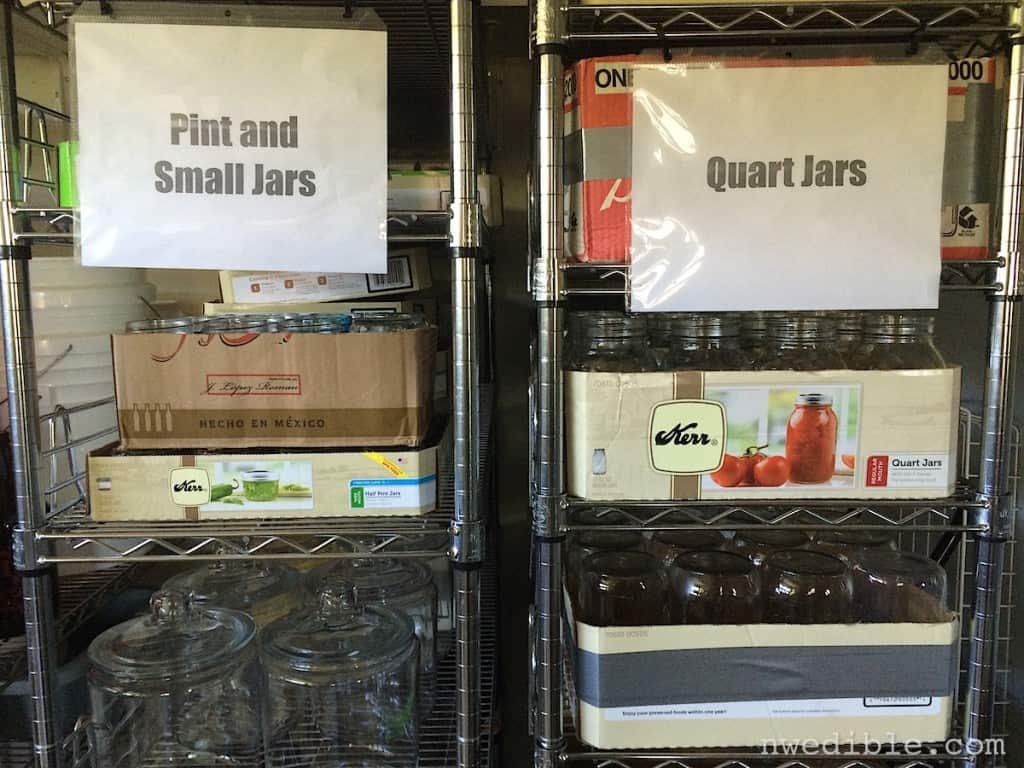
Used jars are always an option, but be warned that many thrift stores charge nearly as much for used jars without lids as it costs to buy jars new with lids! Craigslist, your local Freecycle and Buy Nothing group, garage sales and that nice old lady up the street who’s tired of canning can are better bets.
If you use reusable lids, like Tattler, or glass lidded jars like Weck, inspect your lids and gaskets carefully for signs of wear and tear. U.S. food safety recommendations are to treat rubber gaskets used for canning as single-use items, but according to Marisa at Food In Jars, in Europe gaskets are typically used until they begin to stretch. I follow U.S. food safety regulations.
If you use two piece lids, check to see how many boxes of flats you have. If you are a large-scale canner, it might make sense to [easyazon_link identifier=”B00I17LC92″ locale=”US” tag=”nortediblife-20″]buy lids in bulk[/easyazon_link]. In any event, do keep your eye out for good deals on lids in grocery and hardware stores.
While we’re doing this, let’s go through our rings. If you are like me, you probably have 17 times more rings than will ever need. Remember, after the jars cool and set their seals, it’s best to take off the rings and store the jars with just the sealed flat.
Go through your rings and pull out any that are rusty or no longer perfectly round. Upcycle, recycle or donate extra rings.
9. Stock up on basics.
There are some items that I know I will use a ton of throughout canning season. Vinegar, kosher salt, pickling salt, organic sugar and citric acid are my must-haves for jamming, pickling and processing my way through hundreds of pounds of seasonal produce. Your basics might also include pectin and bottled lemon juice.
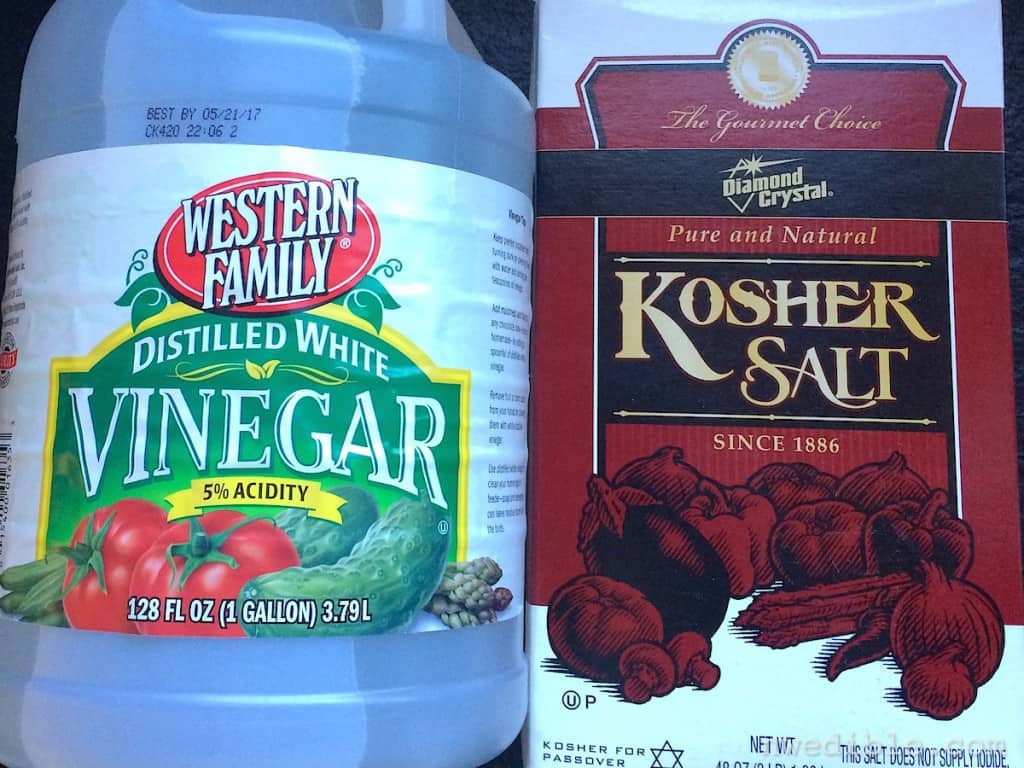
Stock up on the basics you know will be used in your preserving. Vinegar, salt and sugar don’t go bad, and it’s such a pain to have to run out to the store if you find yourself suddenly out of apple cider vinegar. If you can a lot, all these things are available for far less in bulk at stores like Costco.
Check through your spices, too, and make sure you’re good for dill seed, black peppercorns, cinnamon, pickling spice, or whatever spices you know will be used. I highly recommend buying your spices in bulk. Fresh spices mean tastier preserves!
10. Don’t Go It Alone
While they aren’t technically “gear,” one of the most useful tools in your canning kitchen is a productive friend by your side! It’s just more fun to do this kind of work with another person, so text your friends, call your mom, email your neighbor and see who might be up for an afternoon of pickling or jamming.
Alternatively, if your kitchen can’t handle the chaos of multiple canners at once or you just prefer to can in meditative contemplation, throw a canned food swap after the jars cool and the seals set. A canning swap is like the late summer equivalent of a holiday cookie swap, and is a fantastic way to get more variety in your preserves.
Just, do me a favor, make sure anyone you are swapping jars with follows the same high modern safety standards that I know you do, and can confidently and proudly explain how their product was made.
The Giveaway!
Margaret and I are each giving away a kit of canning gear that will help you get started. So, enter here and then make sure you go visit A Way To Garden to enter on her site. Twice the possibility of winning! See, I told you canning was better with friends.
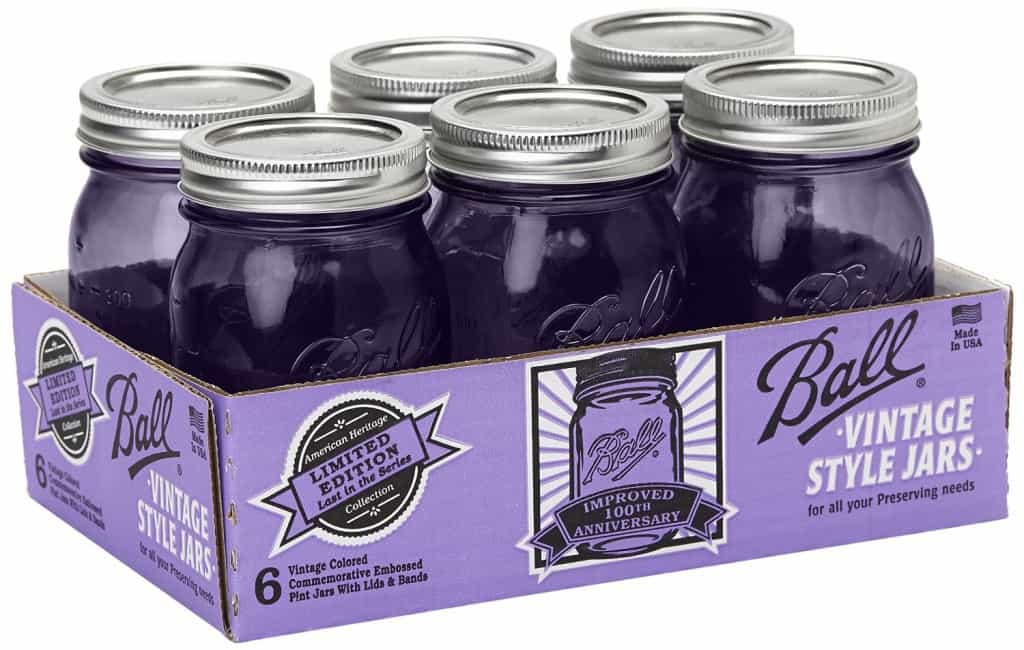
Here’s what you’re entering to win:
- The recently updated [easyazon_link identifier=”B005SK6Y1Q” locale=”US” tag=”nortediblife-20″]Ball Blue Book[/easyazon_link]
- 1 Case (6 jars) of the new [easyazon_link identifier=”B00ODC255Y” locale=”US” tag=”nortediblife-20″]Ball brand Heritage Purple Canning Jars[/easyazon_link] in Pints
- 1 Case (6 jars) of the new Ball brand Heritage Purple Canning Jars in Quarts
- 1 [easyazon_link identifier=”B000HJBFGC” locale=”US” tag=”nortediblife-20″]Norpro Jar Lifter[/easyazon_link]
- [easyazon_link identifier=”B007QT4GMQ” locale=”US” tag=”nortediblife-20″]My favorite canning funnel[/easyazon_link]
- A [easyazon_link identifier=”B007QT4GNU” locale=”US” tag=”nortediblife-20″]specially designed canning scoop[/easyazon_link], to get that jam into the jar.
To Be Entered
Just answer this simple question in the comments section below: “What one food preservation topic do you wish you knew more about?”
The Fine Print
Open to US residents of the United States only.
Contest closes 8 pm Pacific time, Sunday, June 21th 2015.
Winner will be notified by email and shall have 48 hours to respond to claim their prize.
Ball Blue Book and Ball brand Heritage Jars provided by Jarden Home Brands. All other items provided by NWEdible (me!).
And don’t forget to go enter over on Margaret’s site, too!
Good luck!
2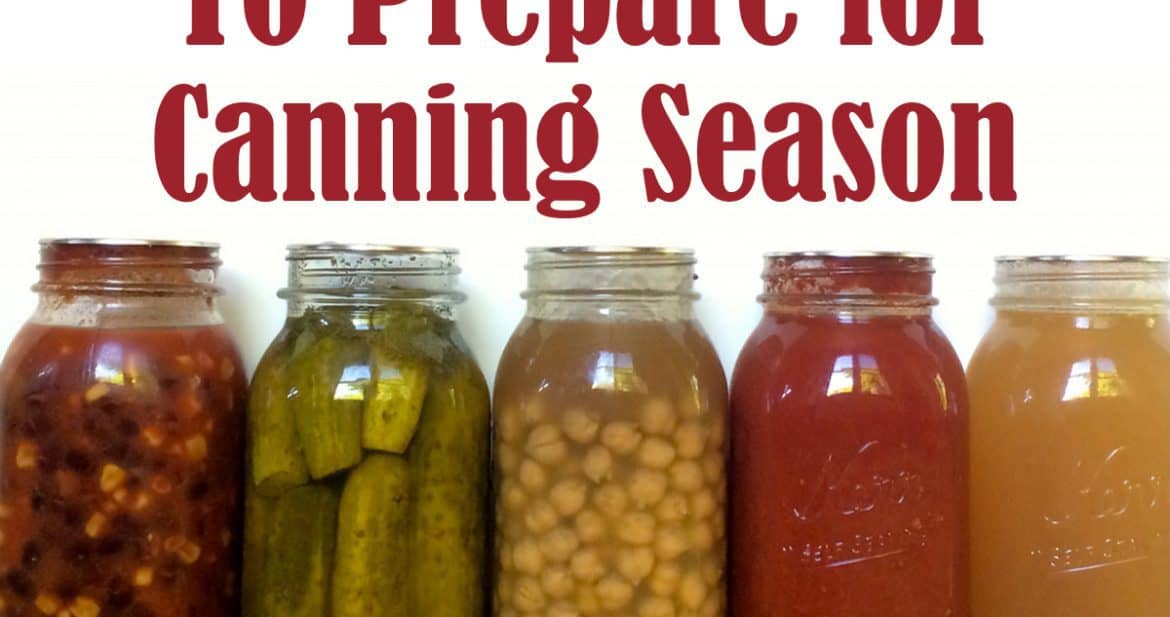
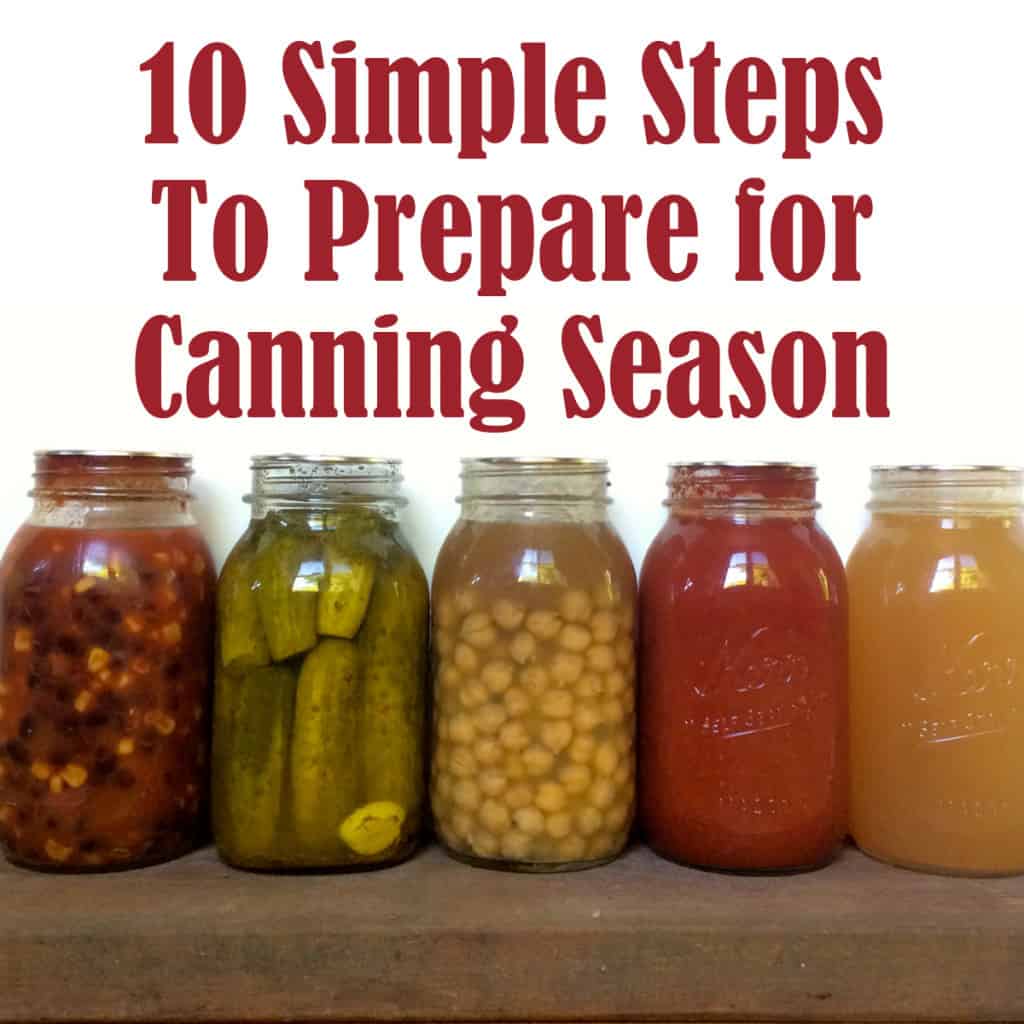
This may seem like a funny problem, but I would like to know how to preserve eggs! We have chickens, and in the spring get a ton of eggs, but now with the heat or something, they have slowed down dramatically. I gave away a lot of eggs in April and May, and that is fun too… but I wish I had frozen? or done something so that I could have more of our fabulous organic eggs available for cooking/baking, if not for eating fresh. Loved your conversation with Margaret, and would love to update my canning equipment. Glad to find your site here, and looking forward to exploring it more!
I, too, had the “problem” of too many eggs to use (oh, that all of life was blessed so). One day I mentioned this to my grandmother who gave me such an easy solution I couldn’t believe I hadn’t thought of it myself. Freezing! IMO these are only good for baking and absolutely make certain that you cook them thoroughly, but it is so much better than tossing any precious cackle-berries for lack of need.
Gran had a number of aluminum ice cube trays (purchased from her long gone Woolworth’s) that she would sterilize by boiling in her canning pot. Now a days I would use the individual freezer plastics* that can be tossed in the dishwasher.
Then she would break the eggs, either whole or separated**, into her blender, give a quick pulse or two just to blend, pour through a strainer over a large measuring cup and pour into the trays. A good four hours in the freezer then removed and placed into marked freezer containers (or bags). Try to use these within 3 months (the government food safety site says 12 but I found the quality degraded somewhat). See http://www.foodsafety.gov/keep/charts/eggstorage.html
*break one whole egg into the ice cube tray to give a base measurement; I find in the trays I have, one cube is about equal to 1 whole small egg. Mark this on your freezer container.
**if you are freezing just the yolks, adding a half-teaspoon of salt to a dozen yolks before blending will greatly improve their texture.
water bath, what fruits can best.
Yes, more about canning black beans, garbanzo beans, etc!
Pressure canning. I remember my mom not letting us near the kitchen when she was canning because she was worried the canner would explode. I think maybe she was over reacting but it’s always in the back of my head.
I want to learn to make good pickles!
Pressure canning. I am afraid of some dreadful discolored food or making someone ill.
Pressure canning, followed by fermenting. I think that 2015 is going to be the year of ferments and cultures for me. I’ve started making milk kefir and my husband wants me to try making kimchi (I’m the kitchen microbiologist in the family, not him). 🙂
how to make crunchy pickles
Condiments. Freezing.
I’ve never canned so this whole blog is awesome–what a great opportunity to learn!!!! Thanks 🙂
Please delete previous entry showing my email to the world. Ha! Condiments. Freezing.
Pressure canning.
CRISP pickles and also preserves. Woods, I guess that’s two!
I would like to learn more about fermenting – why does my sauerkraut always mold before it “sauer”s?
I make my sauerkraut in big gallon pickle jars with the lid on. In my experience, things mold when exposed to the air. So, I put a tight lid on and “burp” it just enough to let the built up CO2 escape and then close the lid again. Like, I don’t even take the lid off, just crack it, once the extra pressure is down, crank it down again. I haven’t gotten mold OR Kahm yeast (the white stuff that accumulates on top sometimes) since doing it this way.
I would love to make strawberry-rhubarb jam, as I have huge rhubarb plants I inherited from my mother.
Pressure canning and ferments! This is a great article, thank you for so much good information.
I would love to learn more about pressure canning, and lower-sugar recipes. Thanks for the chance to win.!
What’s left in your freezer or pantry from 2014’s harvests, and has your food-stashing season started yet? Tell us a little about your plan.
I have some pears and pear sauce left from last years canning but not many. This year I want to can double the tomatoes if possible. I am even thinking about buying some from the farmer’s market if I don’t get enough from the garden. I am making cucumber and zucchini pickles and relishes this year and will try my hand at fig jam. Happy Canning
I’m new to canning. I’d like to start with pickling veggies and making jam/chutney.
Fermenting, I am still a little intimidated by the process.
I would love to feel more confident about pressure canning. I also would like to perfect my jam and jelly making techniques.
Me too. I used to have a pressure canner and I only use it a few times. I was afraid of it and I liked the frozen corn, beans and peas better than canned. My mother-in-law used to can meat, but I never tried that.
What’s left in your freezer or pantry from 2014’s harvests, and has your food-stashing season started yet? Tell us a little about your plan
I have a few jars of pears and pear sauce left, but not many. I want to can double the tomatoes from last year even if I have to buy some from the farmers market. I will also be doing zucchini pickles and relish along with the regular cucumbers and will be trying my hand at fig jam. Happy Canning everyone
I know it is in my heritage to put food away for the winter but no family members taught me. Thank you for getting me in touch with my roots! (sorry about the pun!)
Growing for the first time this summer so Ill go full circle to canning my own, with your help.
I would like to know more about canning and fermenting.
No question about it — pressure canning!
Everything, I canned tomatoes when I was a kid with my mom but never on my own…I’m ready to try.
pressure canning for sure.
How long are my canned goods still good? I guess that means I want to know more about canning…
Some great real Mexican salsa recipes that I can be sure are acid enough for hot water canning.
What a great writeup to get my brain in preservation mode! I need to learn more about preserving salmon in the way of salmon jerky. I struggle getting enough protein in my child and this is one way to add to that struggle.
I, too, helped my mom as she canned tomatoes, green beans, pickles, jellies and put corn, butter beans, peaches, in the freezer. Now that I’m growing a small garden of my own, I’m ready to learn the basics.
We are trying to learn more pickle recipes.
I see I am not alone in being intimidated by pressure canning. I think I will contact my local extension service and see if classes are offered in northern MN.
I am so pleased to visit your website – I followed the link provided by Margaret Roach (don’t you just love her?).
I’d love to learn more about preserving fresh herbs or things made primarily from them.—that’s where my bounty is going to be this year!
I wish I knew more about preserving fruit. Love the canning funnel. Great information….thank you.
I’d like to know more about canning convenience foods. My husband eats a lot of canned chicken noodle soup. I would love to can it myself instead of buying it, but how do you keep the noodles from turning to mush?
What is the best weighted pressure canner to buy?
I would like to know more about pressure canning before I even think about investing in the necessary supplies.
Love the giveaway! I would like to learn about what is best to can vs. freezing. Also recipes for canned soups, salsas and other ready to use foods. Most importantly how not to get botulism.
I want to learn more about salt preservation. I’ve seen recipes for salt, kumquat, and other citrus fruits packed in salt to make salt preserves. Maybe salt preserve jerky? I’m not sure, off to the Google.
Fermentation. One of my goals for this summer is to try to make lacto-fermented salsa.
P.S. This week I tried your method for making pectin-free jam for the first time, and the resulting cherry jam was a triumph. 🙂
Pressure canning—it feels like the next big step for me
As I just wrote on Margaret’s site, I water bath can, dehydrate some stuff, and freeze a lot BUT I’ve always been afraid or Pressure Canning. I’d buy the pressure canner and try it if they weren’t so expensive but to try it once and watch it blow up would certainly turn me off of that project. I do all of my canning out on my porch using a Coleman double burner cook stove.
Using pectin and the rolling boil. I think the only recipes I make that call for a rolling boil are the ones that also use pectin. I’m never sure exactly when to start timing that one minute at a rolling boil and I feel like I over cook the recipe. I’ve tried peach jams without pectin several times and they are not just a little soft, but really runny – too runny.
I wish I knew more about pressure canning and flash freezing. I’m planning to freeze our green beans this year partly because I’m intimidated by pressure canning.
I’ve pickled beans, asparagus, beets and carrots and they turn out yummy. I can never get my dill pickles to taste the way I’d like. Would love to hear some pickling advice.
Pressure canning! I have done many summers of water bath canning, but the pressure cooker just scares me too much. I’ve had a beautiful pressure cooker sitting in our pantry since I got married, and haven’t used it once!
I love the idea of canning beans. I use a lot of beans throughout the year. I never really thought about making my own until seeing this post.
This will be my first year canning. I’m excited and a little scared!
Canning vegan soup made with soaked raw cashews as the “cream” base. I’m coming up empty on that. I think I’m the only vegan in our canning group so I’ve run thru my resources! Looking forward to your new book!